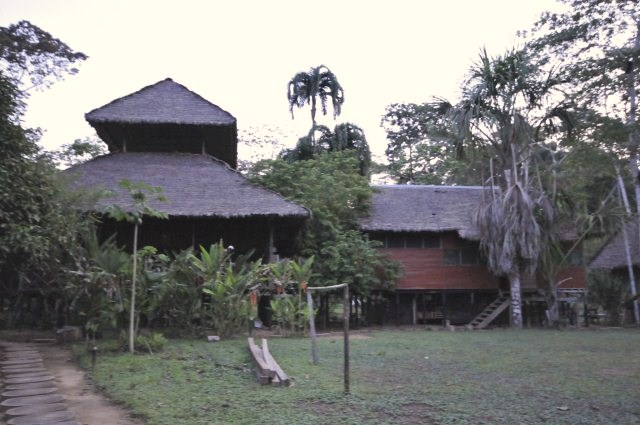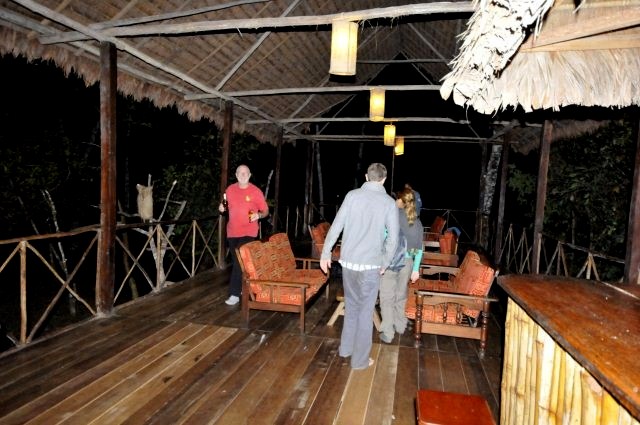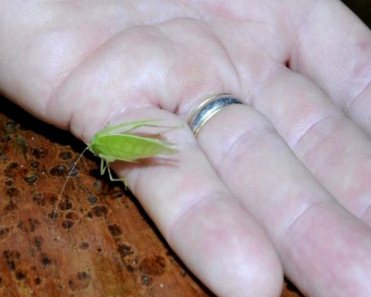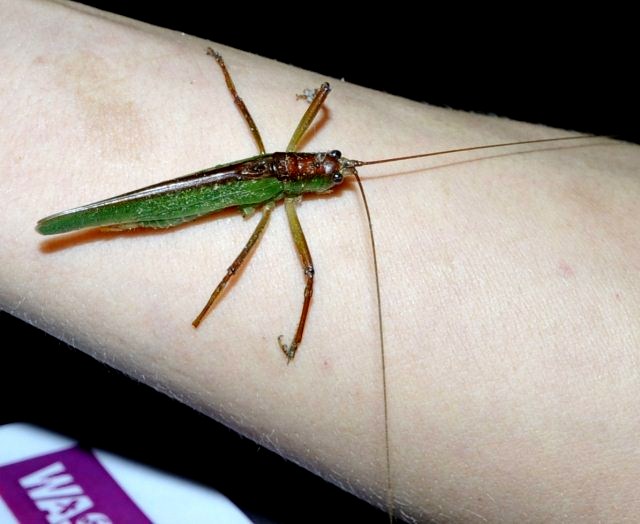Night walk with Omar

|
Our Night Experience of Jungle with Omar
We left our cabin to join the
others in the main building to await Omar for our Night
walk
 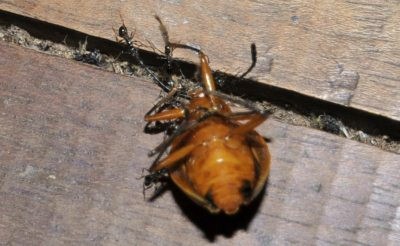 I was kept amused by the antics of
some ants trying to organise themselves to get a bug across
the floor beams
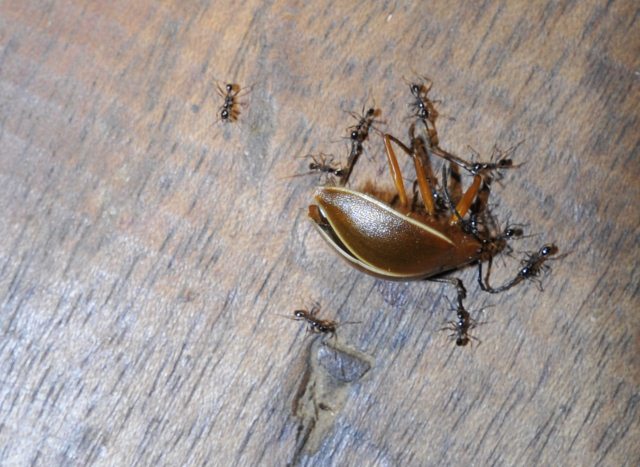 They did well.
Then it was time to go on our At-Venture in the dark
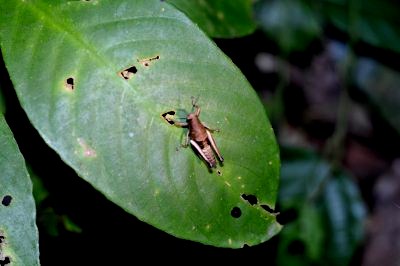 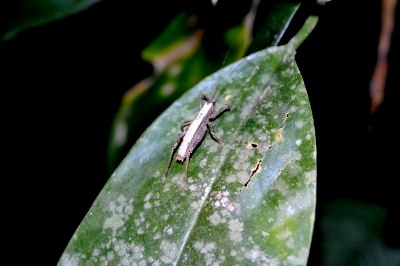 Our initial creatures were tame enough
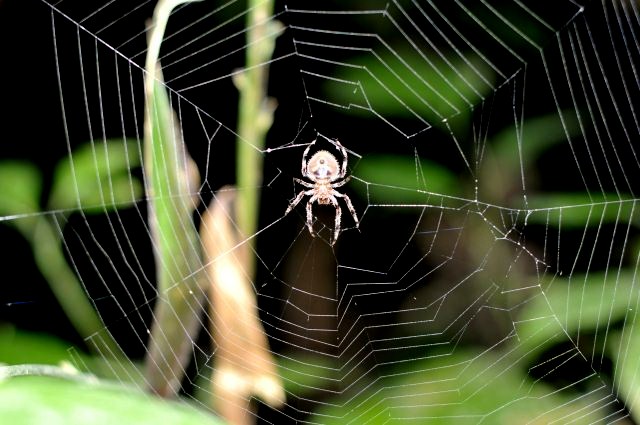 Something a little more sinister
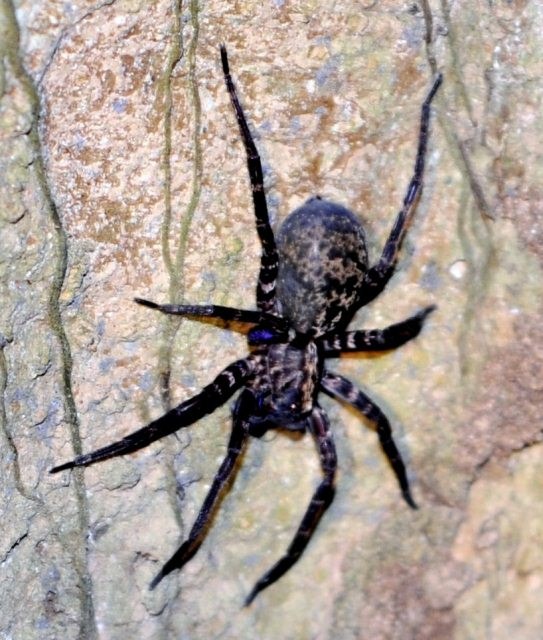 Next it was what Omar called a Tropical Black Widow
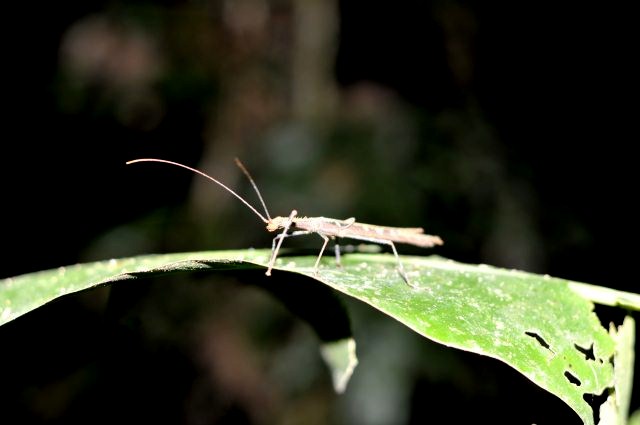 Back to a cutie
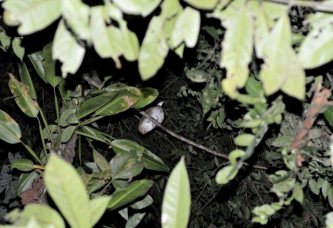 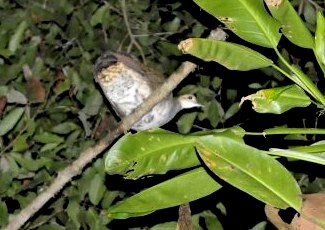 High in the canopy - a Tinamou
Tinamous are a family comprising forty
seven species of birds found in Central and South America. One of the
most ancient living groups of bird, they are related to
the ratites. Generally ground
dwelling, they are found in a range of habitats. Omar said they
live here as solitary birds spending their day scruffing around on the floor
finding seeds and berries, at night high on a suitable branch to
roost.
 Blunt headed tree snake
Imantodes cenchoa, the Mapepire Corde Violon is a slender snake found in northern South America and Trinidad and Tobago. It feeds on geckos, Anolis lizards, frogs, reptile eggs and frog eggs. The most amazing thing about this snake was how far it could waggle from the branch leaving very little to anchor it to the tree.
 Omar got at to wait at a safe distance while he wiggled a piece of vine down a whole. I had asked earlier if the holes were crabs. No.....
Tarantulas make the holes here
Tarantulas comprise a group of hairy and often very large arachnids belonging mainly to the family Theraphosidae, of which approximately nine hundred species have been identified. Historically tarantulas were the bigger genera from the family Lycosidae (like Lycosa tarantula). The colonists of the Americas gave the name to the bigger spiders of the tropic-dwelling families Theraphosidae and Dipluridae (funnel-web tarantulas), and that usage has now supplanted the earlier European one. Some genera of tarantula hunt prey primarily in trees; others hunt on or near the ground. All tarantulas can produce silk - while arboreal species will typically reside in a silken "tube tent", terrestrial species will line their burrows with silk to stabilize the burrow wall and facilitate climbing up and down. Tarantulas mainly eat insects and other arthropods, using ambush as their primary method of prey capture. The biggest tarantulas can kill animals as large as lizards, mice, and birds. Tarantulas are found in tropical and desert regions around the world. Most tarantulas are harmless to humans, and some species are popular in the exotic pet trade. All tarantulas are venomous, but only some species (while not known to have ever produced human fatalities) have venom that can produce extreme discomfort over a period of several days. The name 'tarantula' comes from the town of Taranto in Southern Italy and was originally used for an unrelated species of European wolf spider. The name was borrowed to apply to the theraphosids when Europeans explored areas where these large spiders were common. In Africa, theraphosids are frequently referred to as "baboon spiders". Asian forms are known as "earth tigers" or "bird-eating spiders". Australians refer to their species as "barking spiders", "whistling spiders", or "bird-eating spiders". People in French-speaking areas may apply the general name "mygales" to theraphosid spiders. 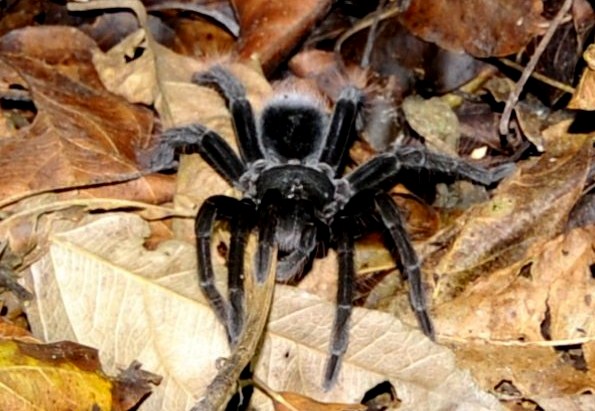
A fairly cross chap gave the stick a good seeing to
After this level of excitement it was time for a beer before supper. Bear was happy to be away from the threat of snakes with his cold brew
Refill time. More fun at the bar as Bear held a Great Katydid The family Tettigoniidae, known as katydids and in England as bush-crickets, contains more than six thousand four hundred species. It is part of the suborder Ensifera and the only family in the superfamily Tettigonioidea. They are also known as long-horned grasshoppers, although they are more closely related to crickets than to grasshoppers. Many tettigoniids exhibit mimicry and camouflage, commonly with shapes and colors similar to leaves.
A cuddle with a cicada, here they only live for a season of nine months for their entire life cycle, not like the others we have met that are grubs for years
A fond farewell from a rainbow grasshopper. Then it was supper of soup, beef stew and jelly
ALL IN ALL TIME FOR BED AFTER SUCH A WONDERFUL DAY |
